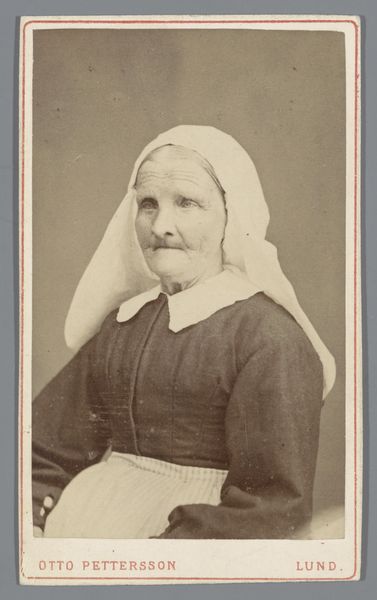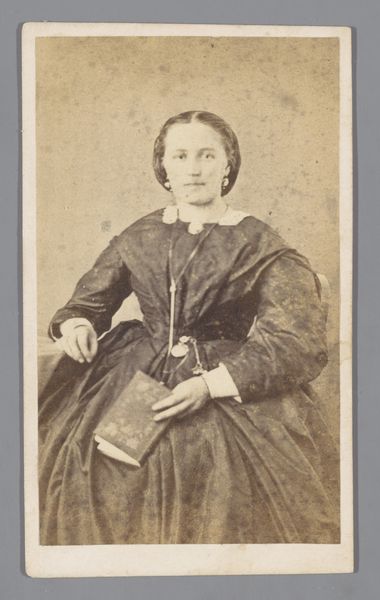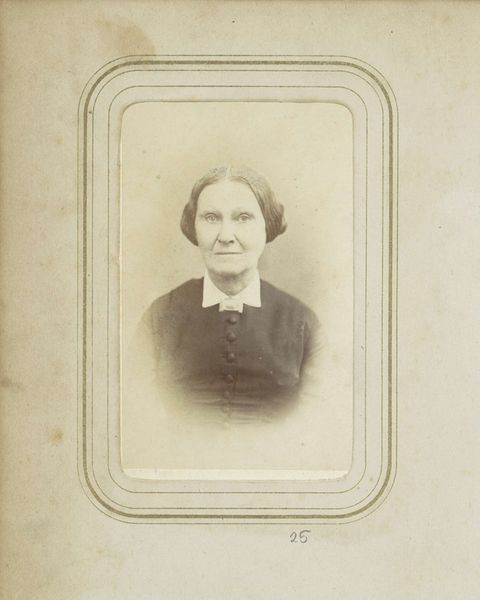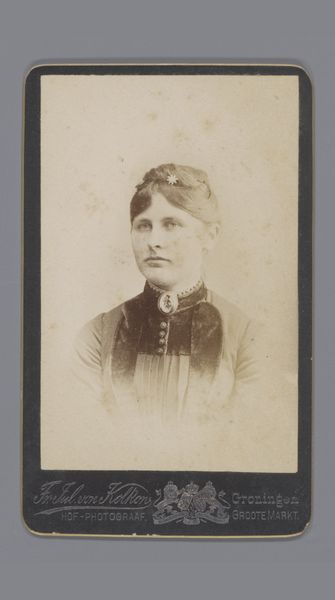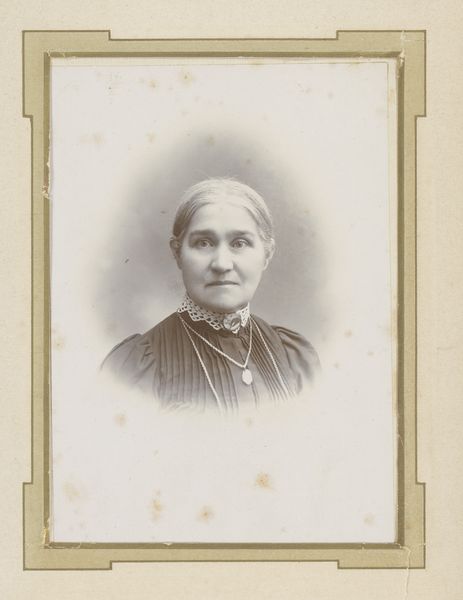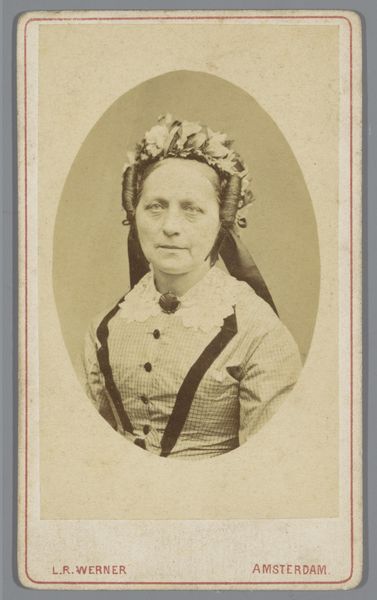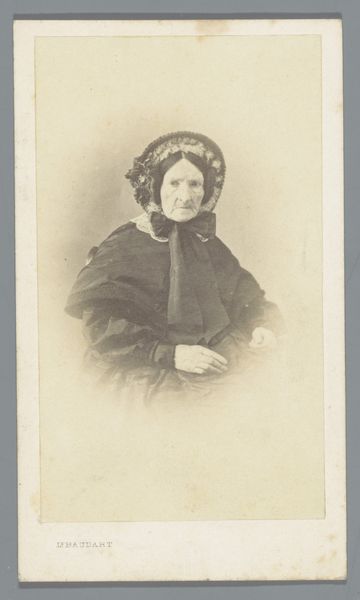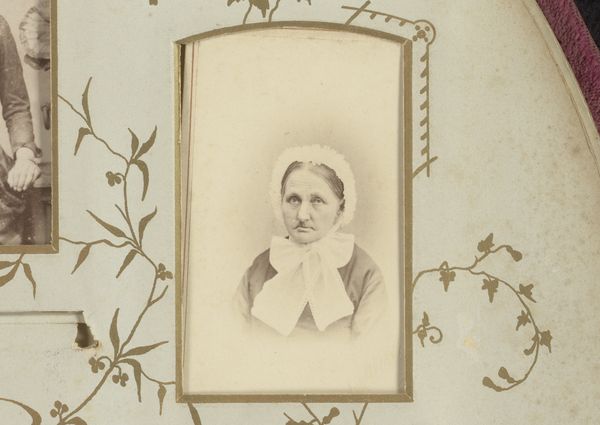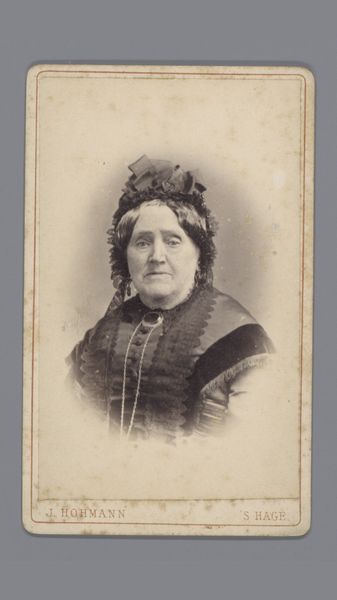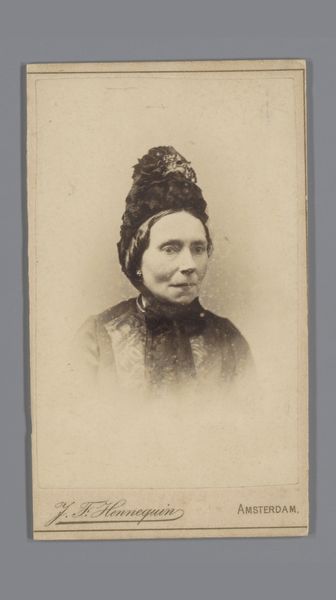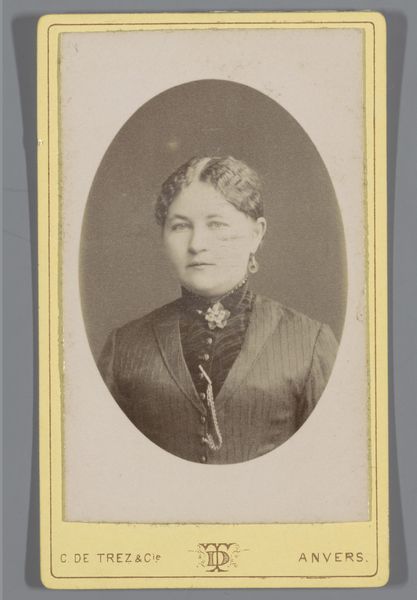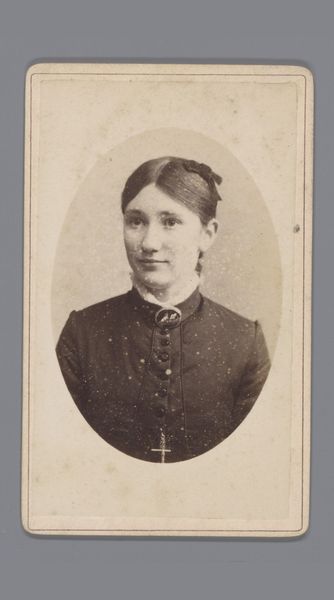
photography, gelatin-silver-print
#
portrait
#
photography
#
gelatin-silver-print
#
genre-painting
#
portrait art
#
realism
Dimensions: height 105 mm, width 64 mm
Copyright: Rijks Museum: Open Domain
Curator: Looking at this photograph, a certain stillness permeates. The textures—her worn face, the cotton of her cap, the sheen of the gelatin-silver print itself—all contribute to a powerful, quiet dignity. Editor: Dignity, certainly, but also a pronounced austerity. There's a compelling contrast between the material simplicity of her clothes and the deliberate formality of the portrait sitting. The very act of having one's photograph taken was a significant investment then, wasn't it? Curator: Absolutely. What you observe relates strongly to codes of representation, particularly within genre paintings. Consider the formal composition: oval format, studio backdrop. While it presents the woman’s particular image, it also positions her as a representation of an idea about women and aging. This work by Charbonnier, dating between 1880 and 1900, is called "Portret van een onbekende oude vrouw," which means “Portrait of an Unknown Old Woman.” Editor: "Unknown," yes, and I'm drawn to how the silver gelatin printing process itself impacts the work. That particular chemical alchemy—how the silver particles are suspended, how they reflect the light—lends the image its melancholic tone. And I keep thinking about the labor involved; the photographer meticulously controlling the conditions to coax this image onto the glass plate, then printed onto the card. Curator: That melancholic tone is something felt universally when looking at pictures of unknown people who lived long ago. It is a moment captured and preserved, where that image speaks to our notions of ancestry and heritage. Editor: Exactly. Each stage reveals a human effort. It prompts me to consider who controlled the means of representation at the time and how that influenced who got remembered in what ways. Curator: An apt point! It speaks to how portraits transcend simple depictions. They solidify cultural memory, encoding ideals of status, beauty, or, in this case perhaps, piety. I’m left pondering about her story—what hardships, what joys shaped the contours of her face. Editor: And I'm intrigued to remember that each element used -- the gelatin, silver, lens -- had a history as a manufactured good, bringing a whole other story into play behind her enduring gaze. Curator: It’s in that gaze that her image endures, reminding us of the individuals behind the history and art we study, who were also essential to material culture. Editor: Precisely, connecting both making and being, a woman who sits both plainly and powerfully within the frame.
Comments
No comments
Be the first to comment and join the conversation on the ultimate creative platform.
